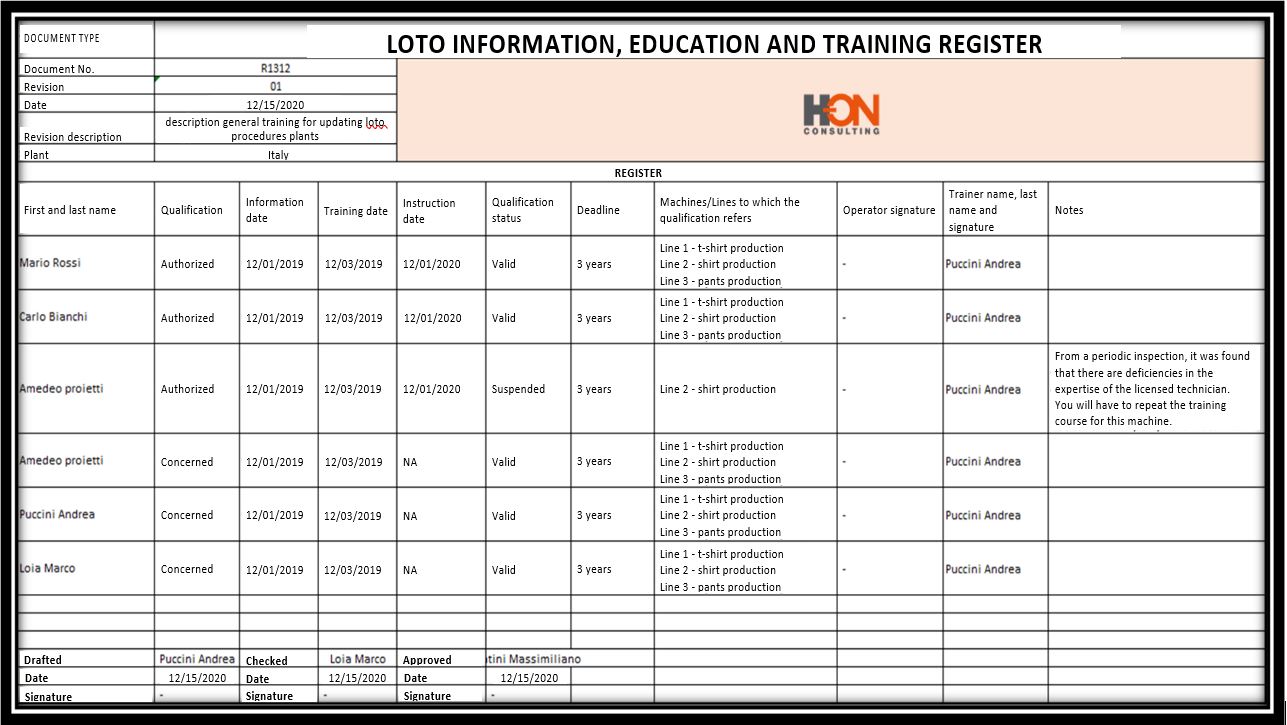LOTO (Lockout/Tagout) procedures are an effective way to prevent injury risks due to the unexpected startup of equipment. What fulfillments do LOTOs provide for the employer and how should workers put them into practice?
When mitigating the risk of unexpected startup is a priority
European Union data show that 10-15% of fatal workplace accidents are maintenance-related.
The main risk associated with maintenance and normal operation phases is the risk of unexpected startup.
It should be specified how, in addition to injury to operators, this also results in plant downtime and possible equipment breakage.
This risk is due to hazardous elements of the machines regarding:
- A start command that activates unexpectedly due to a control system failure
- A start command that is suddenly generated by an inappropriate action on a sensor
- A restoration of power supply after an interruption
Accessing a dangerous segregated area always requires isolating all energy to prevent, for example, an operator from re-energizing it.
Here is how in these cases injury prevention can be carried out by applying a simple procedure known as “Lockout/Tagout” or “LOTO.”
Normative references
The importance of unexpected startup risk is keenly felt both at the European level but even more so in the American world.
The main normative and legislative references that deal with this issue are:
- ITALY, Decree 81/08, Directive 2006/42/EC and UNI EN 14118
- UNITED STATES, OSHA Regulation 1910.147, 1910.269 or 1910.333, and ANSI
The provisions specifically provide some definitions for the proper application of LOTO procedures:
- Affected employee a person whose job requires the use of a machine on which maintenance work is performed under lockout or tagout conditions.
- Authorized employee who locks or tags out equipment to perform service or maintenance on the machine.
- Energy isolating device, a mechanical element that physically prevents the transmission or release of energy.
- Lockout device, e.g. a lock, to keep an energy isolation device in a secure position and prevent unexpected startup of the machine.
- Tagout device, a clearly visible warning device, such as a tag, that can be securely attached to an energy isolating device in accordance with an established procedure.
The best practice is the inclusion of both Lockout and Tagout devices where the Lockout system will be considered as the mandatory physical protection, while the use of tags (Tagout) will serve as a visual and written notification for all personnel.
Employer’s requirements
One of the main legislative requirements is that employers establish an energy control program to ensure that employees isolate machines from their energy sources before performing maintenance operations.
Employers must:
- Establish energy control procedures to prevent unexpected restarts
- Train employees on the energy control program
- Inspect these procedures periodically to ensure that they are followed and remain effective
- Retrain affected and authorized employees whenever there is a “change” in defined procedures, including through refresher courses
The possibility of having to carry out maintenance activities on multiple shifts, resulting in the possibility of one employee being absent, must be evaluated.
Specific procedures must be used during shifts to ensure the continuity of Lockout or Tagout protection, including a description for the orderly transfer of lockout or tagout protection between outgoing and incoming employees.
All employees must be trained to know and to ensure the purpose and function of the energy control program, each according to organized roles.
For example, the authorized employee must be informed, trained and instructed on:
- How to track and recognize hazardous energy sources
- How to identify the types and magnitudes of energy used in the workplace
- How to isolate hazardous energy sources
The employer must conduct a periodic inspection of the energy control procedure at least once a year to ensure that the LOTO procedure is always implemented in accordance with applicable regulations.
With the inspection certification, the employer must identify the machine on which the procedure was used, the date, the employees included in the inspection, and the inspector.
Finally, whenever an update of procedures is made, retraining should re-establish the qualification of employees and introduce new or revised control methods, if necessary. Here is an example.


Do you need immediate assistance with LOTO procedures?
Go back to the blog
